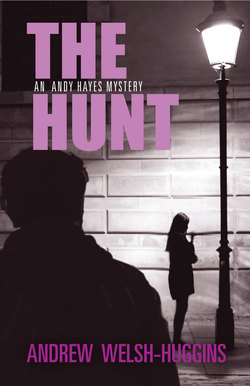Читать книгу The Hunt - Andrew Welsh-Huggins - Страница 12
На сайте Литреса книга снята с продажи.
Оглавление3
FIVE BODIES SO FAR. NOT SIX. FIVE THAT they’d found. The actual number? No one knew.
Well, that wasn’t strictly true.
One person did.
The first turned up nearly a year ago, on a snowless February morning so cold they canceled school anyway, the woman dumped behind a trash bin in an alley not far from the corner of Main and Champion on the east side. Melissa Loomis. Strangled. “Missy” to her friends and family, what little she had left of either. Twenty-seven. Two kids, though the county had taken them years earlier. Addicted to heroin, a habit she supported by selling the only thing she thought she had left of value, usually on the streets, sometimes, in the better months, out of a rent-by-the-hour motel room. Once upon a time she’d nearly finished a general studies associate’s degree at Columbus State, with aspirations to be a teacher. Then she slipped on ice and a friend of a friend offered a pill for the pain and the ensuing addiction ended that dream. The rest was an all too familiar story.
The next, Talanda York, the following April. Body found by a farmer in a ditch in Groveport on the southeast side. Pronounced ligature marks around her neck. Thirty-eight, black, several kids. Also a heroin addict, also a prostitute, although she’d slipped back into the life only recently after what seemed like a couple of good years. It escaped no one’s attention, especially the media’s, that two prostitutes had been murdered within a few months’ time. But the two hadn’t known each other and their bodies were miles apart. After a flurry of articles and news segments, people diverted their attention elsewhere.
Then, over the summer, two bodies discovered inside of three weeks. The first, Natasha Rumsey, nineteen, white, last seen by her boyfriend a month earlier after they’d had a fight—his story—and she’d stormed out of his apartment. Taking the missing person report, a Columbus detective needed all of five minutes to figure out that “boyfriend” was a euphemism for a freelance pimp who’d blown his stack at Natasha because he didn’t tolerate backtalk and Natasha was, by his account, one mouthy bitch. A homeless man found her in an abandoned house off Bryden Road in late June where he’d hoped to squat. The boyfriend was picked up on unrelated drug charges while they tried to make a case against him. Days went by without a murder indictment. Eventually, it became clear that while he might have consigned Natasha to her death by his actions, he probably wasn’t her killer. In a cruel irony, it appeared that in Natasha’s short and brutal life, her boyfriend-pimp was the only one who’d cared enough to tell somebody she was gone.
The next body, Lisa Washington, was hooked by fishermen angling for carp at the Scioto reservoir off Greenlawn. Her grandmother had reported the twenty-four-year-old African American woman missing two weeks earlier. She was the same age as Jessica Byrnes and, like her, hadn’t been seen for a while by the time the report was filed. People began to get nervous. Fear started to heal estrangements. Family feuds were swept aside. A new reality settled over the city like a chill summer mist.
The headlines surged and then, as they do, faded again. By now it was fall in central Ohio, which meant football season, which meant people had more important things on their minds. Then, just two weeks ago, a kid playing hooky stumbled across the partially decomposed body of Juanita Cowgill in a field along 3C highway between Mound and Alkire, a straight shot south from the Bottoms, the neighborhood served by Roy’s church. A part of town where many of the city’s most desperate prostitutes plied their trade. Juanita’s parents threw her out at eighteen when she accused a family friend of abusing her. She bounced from boyfriend to boyfriend until she landed with one looking for a source of revenue without actually having to work himself. She was two days shy of her twenty-first birthday. After her body was found, the coroner announced at a news conference that each woman had been strangled with a similar cord and each showed signs of sexual assault. There was no disguising it. Columbus had a serial killer on its hands.
Five. Five women raped, strangled, and thrown away like garbage. A task force was assembled. Hands were wrung at City Hall. The FBI got involved. Missing person reports rained down on the police department like parade confetti. Johns grew wary as Columbus vice started running nightly soliciting stings. Right after Juanita’s body was discovered, the Dispatch and Channel 7 interviewed Roy, whose church worked with trafficking victims. “Being poor and hopeless is not a crime,” he said, urging people to put family disagreements aside and account for loved ones.
And then Bill Byrnes called.
